19th Century Author Whose Works Are Still Read Word for Word Crossword
i. The Pilgrim's Progress by John Bunyan (1678)
A story of a homo in search of truth told with the simple clarity and beauty of Bunyan'southward prose make this the ultimate English classic.
2. Robinson Crusoe past Daniel Defoe (1719)
Past the end of the 19th century, no book in English language literary history had enjoyed more editions, spin-offs and translations. Crusoe'southward world-famous novel is a complex literary confection, and information technology's irresistible.
iii. Gulliver's Travels past Jonathan Swift (1726)
A satirical masterpiece that'due south never been out of impress, Jonathan Swift's Gulliver's Travels comes third in our list of the best novels written in English
4. Clarissa by Samuel Richardson (1748)
Clarissa is a tragic heroine, pressured by her unscrupulous nouveau-riche family to marry a wealthy man she detests, in the book that Samuel Johnson described every bit "the first book in the world for the cognition it displays of the human heart."
5. Tom Jones by Henry Fielding (1749)
Tom Jones is a classic English novel that captures the spirit of its age and whose famous characters have come to represent Augustan guild in all its loquacious, turbulent, comic variety.
six. The Life and Opinions of Tristram Shandy, Gentleman by Laurence Sterne (1759)
Laurence Sterne's brilliant novel caused please and consternation when it first appeared and has lost little of its original bite.
7. Emma by Jane Austen (1816)
Jane Austen's Emma is her masterpiece, mixing the sparkle of her early books with a deep sensibility.
8. Frankenstein by Mary Shelley (1818)
Mary Shelley'south beginning novel has been hailed as a masterpiece of horror and the macabre.
nine. Nightmare Abbey by Thomas Beloved Peacock (1818)
The dandy pleasure of Nightmare Abbey, which was inspired past Thomas Love Peacock'due south friendship with Shelley, lies in the delight the author takes in poking fun at the romantic move.
ten. The Narrative of Arthur Gordon Pym of Nantucket by Edgar Allan Poe (1838)
Edgar Allan Poe'due south just novel – a classic take a chance story with supernatural elements – has fascinated and influenced generations of writers.
xi. Sybil by Benjamin Disraeli (1845)
The hereafter prime number government minister displayed flashes of luminescence that equalled the greatest Victorian novelists.
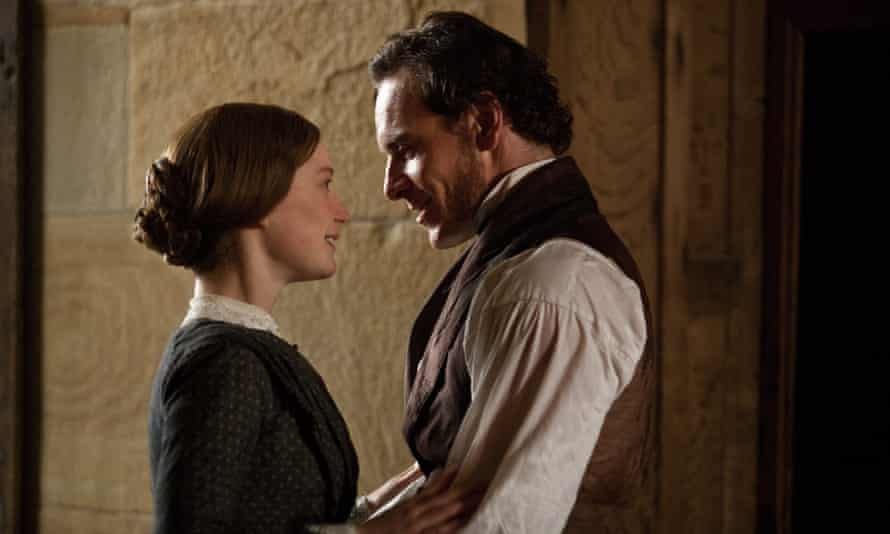
12. Jane Eyre past Charlotte Brontë (1847)
Charlotte Brontë'due south erotic, gothic masterpiece became the sensation of Victorian England. Its corking breakthrough was its intimate dialogue with the reader.
13. Wuthering Heights by Emily Brontë (1847)
Emily Brontë's windswept masterpiece is notable not just for its wild beauty just for its daring reinvention of the novel grade itself.
xiv. Vanity Fair by William Thackeray (1848)
William Thackeray'southward masterpiece, set up in Regency England, is a bravura functioning by a writer at the pinnacle of his game.
15. David Copperfield by Charles Dickens (1850)
David Copperfield marked the point at which Dickens became the bully entertainer and as well laid the foundations for his later, darker masterpieces.
16. The Scarlet Letter of the alphabet by Nathaniel Hawthorne (1850)
Nathaniel Hawthorne's phenomenal book is full of intense symbolism and every bit haunting as anything by Edgar Allan Poe.
17. Moby-Dick by Herman Melville (1851)
Wise, funny and gripping, Melville's ballsy piece of work continues to cast a long shadow over American literature.
eighteen. Alice's Adventures in Wonderland by Lewis Carroll (1865)
Lewis Carroll's brilliant nonsense tale is one of the most influential and best loved in the English language catechism.
19. The Moonstone past Wilkie Collins (1868)
Wilkie Collins's masterpiece, hailed past many as the greatest English language detective novel, is a bright marriage of the sensational and the realistic.
20. Little Women by Louisa May Alcott (1868-9)
Louisa May Alcott'south highly original tale aimed at a young female market has iconic status in America and never been out of print.
21. Middlemarch past George Eliot (1871-ii)
This cathedral of words stands today as perhaps the greatest of the great Victorian fictions.
22. The Way We Live Now by Anthony Trollope (1875)
Inspired by the author'southward fury at the corrupt land of England, and dismissed past critics at the time, The Style We Live Now is recognised as Trollope's masterpiece.
23. The Adventures of Huckleberry Finn past Mark Twain (1884/5)
Marking Twain's tale of a rebel boy and a runaway slave seeking liberation upon the waters of the Mississippi remains a defining classic of American literature.
24. Kidnapped past Robert Louis Stevenson (1886)
A thrilling adventure story, gripping history and fascinating study of the Scottish character, Kidnapped has lost none of its power.
25. Three Men in a Gunkhole past Jerome K Jerome (1889)
Jerome One thousand Jerome's accidental classic about messing about on the Thames remains a comic gem.
26. The Sign of Iv past Arthur Conan Doyle (1890)
Sherlock Holmes's second outing sees Conan Doyle's bright sleuth – and his bluff sidekick Watson – come up into their own.
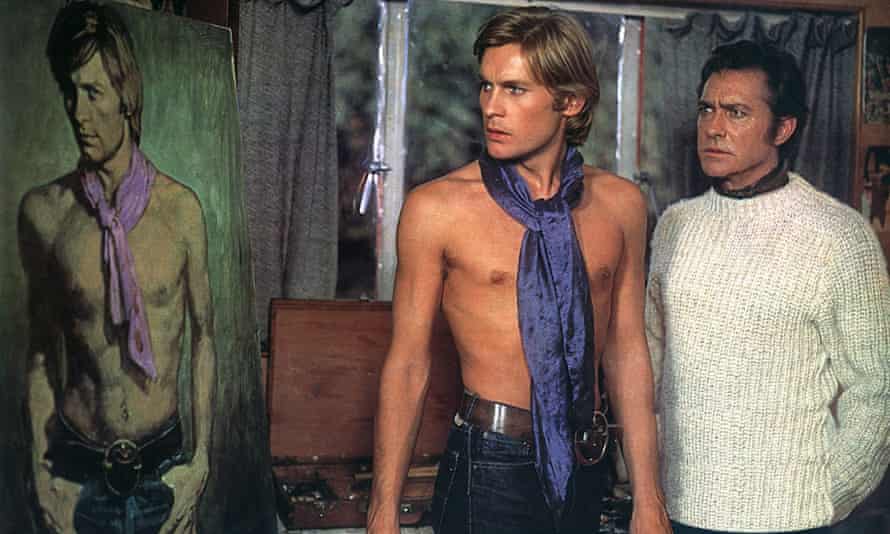
27. The Moving-picture show of Dorian Gray past Oscar Wilde (1891)
Wilde'south brilliantly allusive moral tale of youth, dazzler and corruption was greeted with howls of protestation on publication.
28. New Grub Street by George Gissing (1891)
George Gissing's portrayal of the hard facts of a literary life remains as relevant today every bit it was in the late 19th century.
29. Jude the Obscure past Thomas Hardy (1895)
Hardy exposed his deepest feelings in this dour, angry novel and, stung by the hostile response, he never wrote another.
30. The Cerise Bluecoat of Backbone by Stephen Crane (1895)
Stephen Crane's account of a young human being'due south passage to manhood through soldiery is a design for the great American state of war novel.
31. Dracula by Bram Stoker (1897)
Bram Stoker's classic vampire story was very much of its fourth dimension just all the same resonates more a century subsequently.
32. Centre of Darkness by Joseph Conrad (1899)
Joseph Conrad's masterpiece about a life-changing journey in search of Mr Kurtz has the simplicity of great myth.
33. Sis Carrie past Theodore Dreiser (1900)
Theodore Dreiser was no stylist, merely there's a terrific momentum to his unflinching novel about a country girl'southward American dream.
34. Kim by Rudyard Kipling (1901)
In Kipling's classic male child's ain spy story, an orphan in British India must make a pick between east and westward.
35. The Call of the Wild by Jack London (1903)
Jack London's vivid adventures of a pet domestic dog that goes dorsum to nature reveal an boggling style and consummate storytelling.
36. The Golden Bowl by Henry James (1904)
American literature contains nothing else quite like Henry James'south amazing, labyrinthine and claustrophobic novel.
37. Hadrian the 7th by Frederick Rolfe (1904)
This entertaining if contrived story of a hack writer and priest who becomes pope sheds vivid light on its eccentric author – described past DH Lawrence equally a "human-demon".
38. The Wind in the Willows past Kenneth Grahame (1908)
The evergreen tale from the riverbank and a powerful contribution to the mythology of Edwardian England.
39. The History of Mr Polly past HG Wells (1910)
The choice is neat, just Wells's ironic portrait of a homo very like himself is the novel that stands out.
40. Zuleika Dobson past Max Beerbohm (1911)
The passage of time has conferred a dark power upon Beerbohm'due south ostensibly light and witty Edwardian satire.
41. The Practiced Soldier by Ford Madox Ford (1915)
Ford's masterpiece is a searing report of moral dissolution backside the facade of an English gentleman – and its stylistic influence lingers to this day.
42. The Thirty-Nine Steps by John Buchan (1915)
John Buchan's espionage thriller, with its sparse, contemporary prose, is hard to put down.
43. The Rainbow by DH Lawrence (1915)
The Rainbow is perhaps DH Lawrence'southward finest work, showing him for the radical, protean, thoroughly mod writer he was.
44. Of Man Bondage by Westward Somerset Maugham (1915)
Somerset Maugham's semi-autobiographical novel shows the author's savage honesty and gift for storytelling at their all-time.
45. The Age of Innocence by Edith Wharton (1920)
The story of a blighted New York marriage stands as a tearing indictment of a order estranged from civilisation.
46. Ulysses by James Joyce (1922)
This portrait of a mean solar day in the lives of iii Dubliners remains a towering work, in its discussion play surpassing even Shakespeare.
47. Babbitt by Sinclair Lewis (1922)
What it lacks in construction and guile, this enthralling take on 20s America makes upwards for in bright satire and characterisation.
48. A Passage to Bharat by EM Forster (1924)
EM Forster's about successful work is eerily prescient on the subject area of empire.
49. Gentlemen Adopt Blondes past Anita Loos (1925)
A guilty pleasance it may exist, merely it is impossible to overlook the enduring influence of a tale that helped to define the jazz age.
fifty. Mrs Dalloway by Virginia Woolf (1925)
Woolf'south great novel makes a day of party preparations the canvas for themes of lost honey, life choices and mental illness.
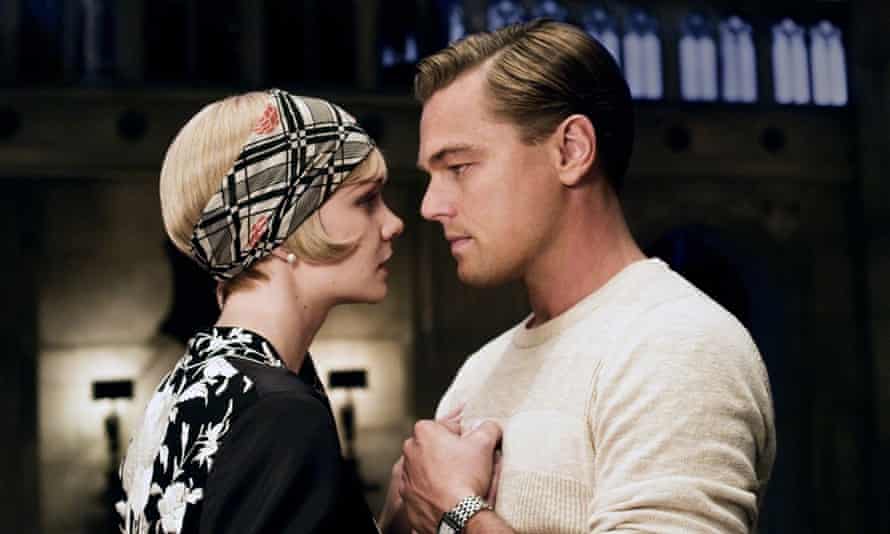
51. The Great Gatsby by F Scott Fitzgerald (1925)
Fitzgerald'due south jazz age masterpiece has become a tantalising metaphor for the eternal mystery of art.
52. Lolly Willowes by Sylvia Townsend Warner (1926)
A young woman escapes convention past becoming a witch in this original satire virtually England after the first earth state of war.
53. The Sun Likewise Rises by Ernest Hemingway (1926)
Hemingway's starting time and best novel makes an escape to 1920s Spain to explore courage, cowardice and manly authenticity.
54. The Maltese Falcon by Dashiell Hammett (1929)
Dashiell Hammett'southward crime thriller and its hard-boiled hero Sam Spade influenced everyone from Chandler to Le Carré.
55. Every bit I Lay Dying by William Faulkner (1930)
The influence of William Faulkner's immersive tale of raw Mississippi rural life tin can be felt to this twenty-four hours.
56. Brave New World by Aldous Huxley (1932)
Aldous Huxley's vision of a time to come human race controlled past global capitalism is equally as prescient every bit Orwell'southward more than famous dystopia.
57. Cold Comfort Subcontract by Stella Gibbons (1932)
The book for which Gibbons is best remembered was a satire of late-Victorian pastoral fiction but went on to influence many subsequent generations.
58. Xix 19 by John Dos Passos (1932)
The centre volume of John Dos Passos's USA trilogy is revolutionary in its intent, techniques and lasting touch on.
59. Tropic of Cancer past Henry Miller (1934)
The US novelist's debut revelled in a Paris underworld of seedy sexual activity and inverse the course of the novel – though not without a fight with the censors.
60. Scoop by Evelyn Waugh (1938)
Evelyn Waugh's Fleet Street satire remains sharp, pertinent and memorable.
61. Murphy past Samuel Beckett (1938)
Samuel Beckett's first published novel is an absurdist masterpiece, a showcase for his uniquely comic voice.
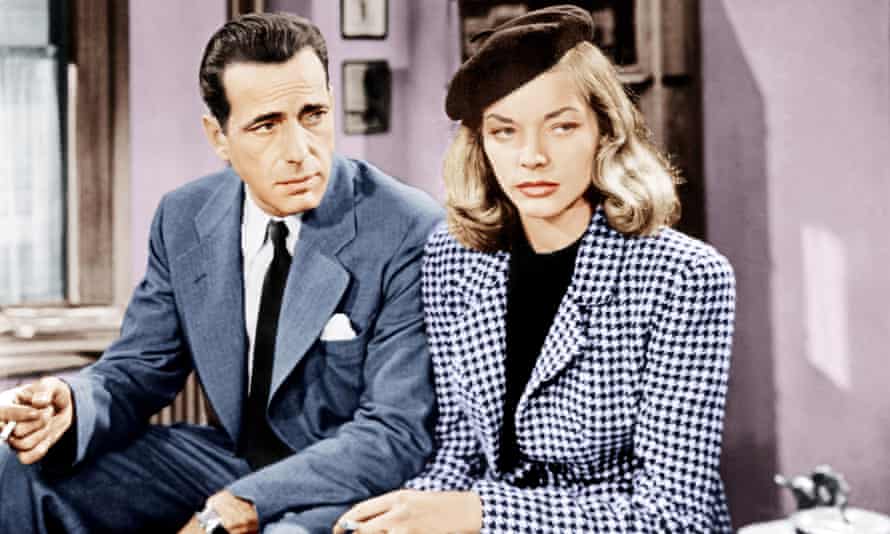
62. The Big Sleep by Raymond Chandler (1939)
Raymond Chandler's hardboiled debut brings to life the seedy LA underworld – and Philip Marlowe, the archetypal fictional detective.
63. Party Going by Henry Green (1939)
Assault the eve of state of war, this neglected modernist masterpiece centres on a group of bright immature revellers delayed by fog.
64. At Swim-Ii-Birds by Flann O'Brien (1939)
Labyrinthine and multilayered, Flann O'Brien'southward humorous debut is both a reflection on, and an exemplar of, the Irish novel.
65. The Grapes of Wrath by John Steinbeck (1939)
I of the greatest of nifty American novels, this report of a family torn apart by poverty and agony in the Neat Depression shocked United states of america society.
66. Joy in the Morning by PG Wodehouse (1946)
PG Wodehouse'due south elegiac Jeeves novel, written during his disastrous years in wartime Frg, remains his masterpiece.
67. All the King's Men by Robert Penn Warren (1946)
A compelling story of personal and political corruption, set in the 1930s in the American south.
68. Under the Volcano by Malcolm Lowry (1947)
Malcolm Lowry's masterpiece about the terminal hours of an alcoholic ex-diplomat in United mexican states is set to the drumbeat of coming conflict.
69. The Heat of the Day by Elizabeth Bowen (1948)
Elizabeth Bowen's 1948 novel perfectly captures the atmosphere of London during the blitz while providing vivid insights into the human being heart.
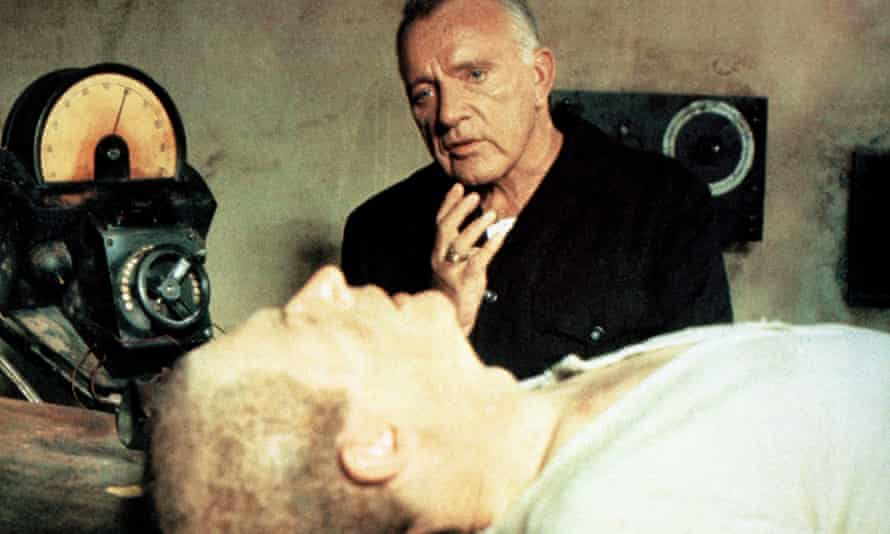
70. Nineteen Eighty-Four past George Orwell (1949)
George Orwell'south dystopian archetype cost its author dear just is arguably the best-known novel in English of the 20th century.
71. The End of the Affair by Graham Greene (1951)
Graham Greene's moving tale of adultery and its aftermath ties together several vital strands in his work.
72. The Catcher in the Rye by JD Salinger (1951)
JD Salinger's study of teenage rebellion remains i of the most controversial and all-time-loved American novels of the 20th century.
73. The Adventures of Augie March by Saul Bellow (1953)
In the long-running hunt to identify the slap-up American novel, Saul Blare's picaresque 3rd book frequently hits the mark.
74. Lord of the Flies by William Golding (1954)
Dismissed at get-go as "rubbish & dull", Golding's brilliantly observed dystopian desert isle tale has since get a classic.
75. Lolita past Vladimir Nabokov (1955)
Nabokov's tragicomic tour de force crosses the boundaries of good taste with glee.
76. On the Route by Jack Kerouac (1957)
The creative history of Kerouac'south crush-generation classic, fuelled past pea soup and benzedrine, has get as famous as the novel itself.
77. Voss by Patrick White (1957)
A love story set against the disappearance of an explorer in the outback, Voss paved the fashion for a generation of Australian writers to shrug off the colonial past.
78. To Impale a Mockingbird by Harper Lee (1960)
Her second novel finally arrived this summer, but Harper Lee's showtime did enough alone to secure her lasting fame, and remains a truly popular classic.
79. The Prime of Miss Jean Brodie past Muriel Spark (1960)
Brusque and bittersweet, Muriel Spark'south tale of the downfall of a Scottish schoolmistress is a masterpiece of narrative fiction.
80. Catch-22 by Joseph Heller (1961)
This acerbic anti-war novel was slow to fire the public imagination, merely is rightly regarded as a groundbreaking critique of military madness.
81. The Gold Notebook by Doris Lessing (1962)
Hailed as one of the key texts of the women's move of the 1960s, this study of a divorced unmarried female parent's search for personal and political identity remains a defiant, ambitious bout de forcefulness.
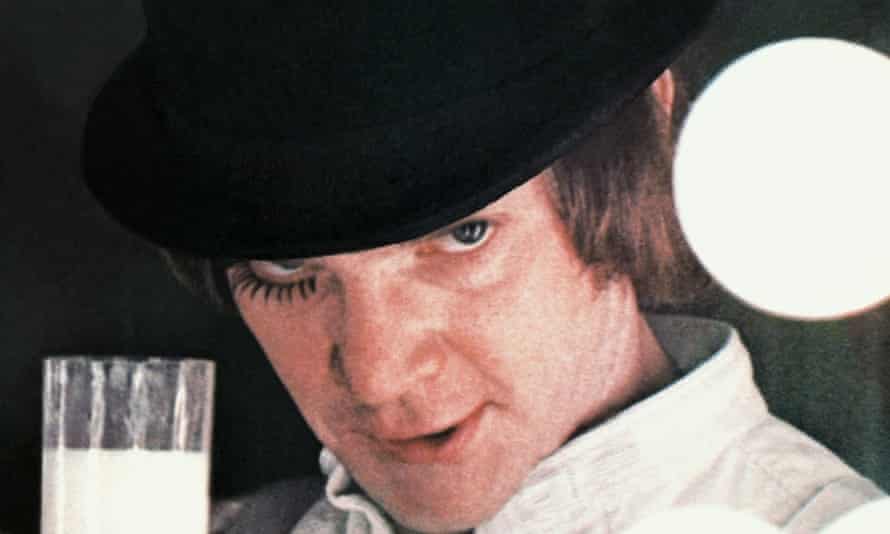
82. A Clockwork Orange by Anthony Burgess (1962)
Anthony Burgess'southward dystopian classic still continues to startle and provoke, refusing to be outshone by Stanley Kubrick's brilliant moving-picture show accommodation.
83. A Single Man by Christopher Isherwood (1964)
Christopher Isherwood's story of a gay Englishman struggling with bereavement in LA is a piece of work of compressed brilliance.
84. In Common cold Blood past Truman Capote (1966)
Truman Capote'southward non-fiction novel, a truthful story of bloody murder in rural Kansas, opens a window on the dark underbelly of postwar America.
85. The Bell Jar by Sylvia Plath (1966)
Sylvia Plath'south painfully graphic roman à clef, in which a woman struggles with her identity in the confront of social pressure, is a key text of Anglo-American feminism.
86. Portnoy's Complaint by Philip Roth (1969)
This wickedly funny novel about a immature Jewish American'southward obsession with masturbation caused outrage on publication, but remains his nearly dazzling work.
87. Mrs Palfrey at the Claremont by Elizabeth Taylor (1971)
Elizabeth Taylor's exquisitely drawn character study of eccentricity in sometime age is a sharp and witty portrait of genteel postwar English life facing the changes taking shape in the 60s.
88. Rabbit Redux by John Updike (1971)
Harry "Rabbit" Angstrom, Updike'due south lovably mediocre alter ego, is one of America'south great literary protoganists, upwards at that place with Huck Finn and Jay Gatsby.
89. Song of Solomon past Toni Morrison (1977)
The novel with which the Nobel prize-winning author established her name is a kaleidoscopic evocation of the African-American experience in the 20th century.
90. A Bend in the River by VS Naipaul (1979)
VS Naipaul'southward hellish vision of an African nation's path to independence saw him accused of racism, but remains his masterpiece.
91. Midnight's Children by Salman Rushdie (1981)
The personal and the historical merge in Salman Rushdie's dazzling, game-irresolute Indian English novel of a young homo born at the very moment of Indian independence.
92. Housekeeping by Marilynne Robinson (1981)
Marilynne Robinson'southward tale of orphaned sisters and their oddball aunt in a remote Idaho boondocks is admired past anybody from Barack Obama to Bret Easton Ellis.
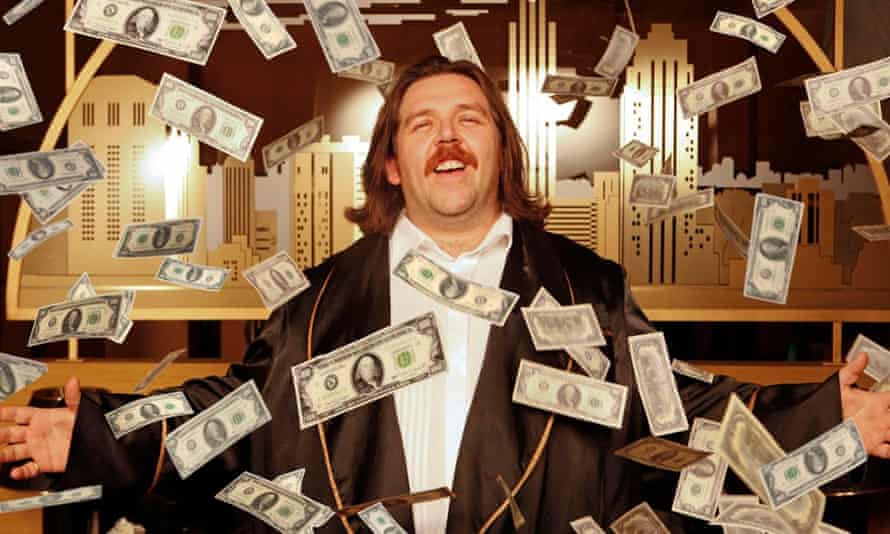
93. Money: A Suicide Note by Martin Amis (1984)
Martin Amis's era-defining ode to excess unleashed one of literature's greatest modern monsters in self-destructive antihero John Self.
94. An Artist of the Floating World by Kazuo Ishiguro (1986)
Kazuo Ishiguro's novel about a retired artist in postwar Japan, reflecting on his career during the country'due south dark years, is a bout de force of unreliable narration.
95. The First of Spring by Penelope Fitzgerald (1988)
Fitzgerald's story, set in Russia just before the Bolshevik revolution, is her masterpiece: a brilliant miniature whose peculiar magic most defies assay.
96. Breathing Lessons by Anne Tyler (1988)
Anne Tyler's portrayal of a middle-aged, mid-American marriage displays her narrative clarity, comic timing and ear for American speech to perfection.
97. Amongst Women by John McGahern (1990)
This modern Irish masterpiece is both a study of the faultlines of Irish patriarchy and an elegy for a lost globe.
98. Underworld by Don DeLillo (1997)
A author of "frightening perception", Don DeLillo guides the reader in an epic journey through America'southward history and popular civilisation.
99. Disgrace by JM Coetzee (1999)
In his Booker-winning masterpiece, Coetzee'due south intensely human vision infuses a fictional globe that both invites and confounds political interpretation.
100. True History of the Kelly Gang by Peter Carey (2000)
Peter Carey rounds off our list of literary milestones with a Booker prize-winning bout-de-strength examining the life and times of Australia's infamous antihero, Ned Kelly.
Source: https://www.theguardian.com/books/2015/aug/17/the-100-best-novels-written-in-english-the-full-list
0 Response to "19th Century Author Whose Works Are Still Read Word for Word Crossword"
Post a Comment